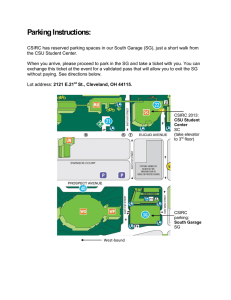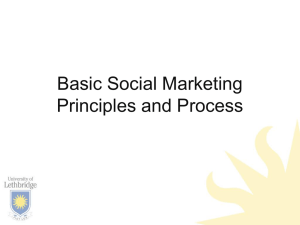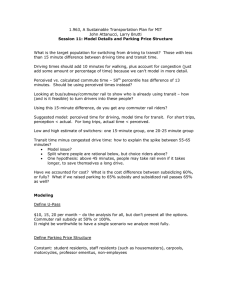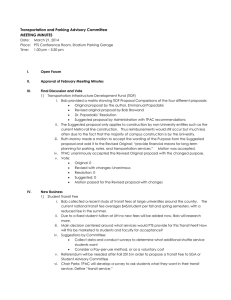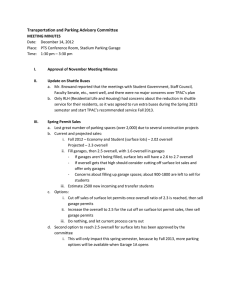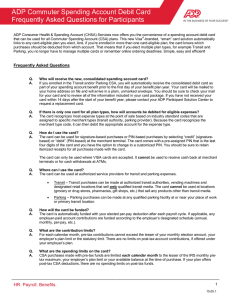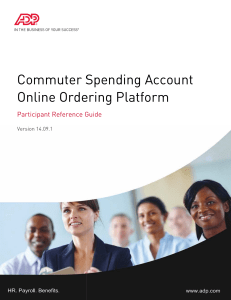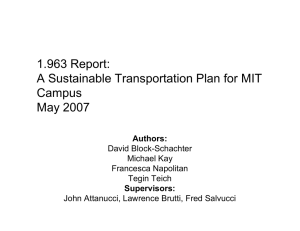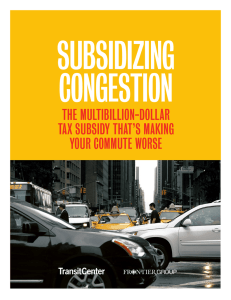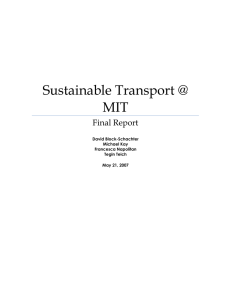Document 13516091
advertisement
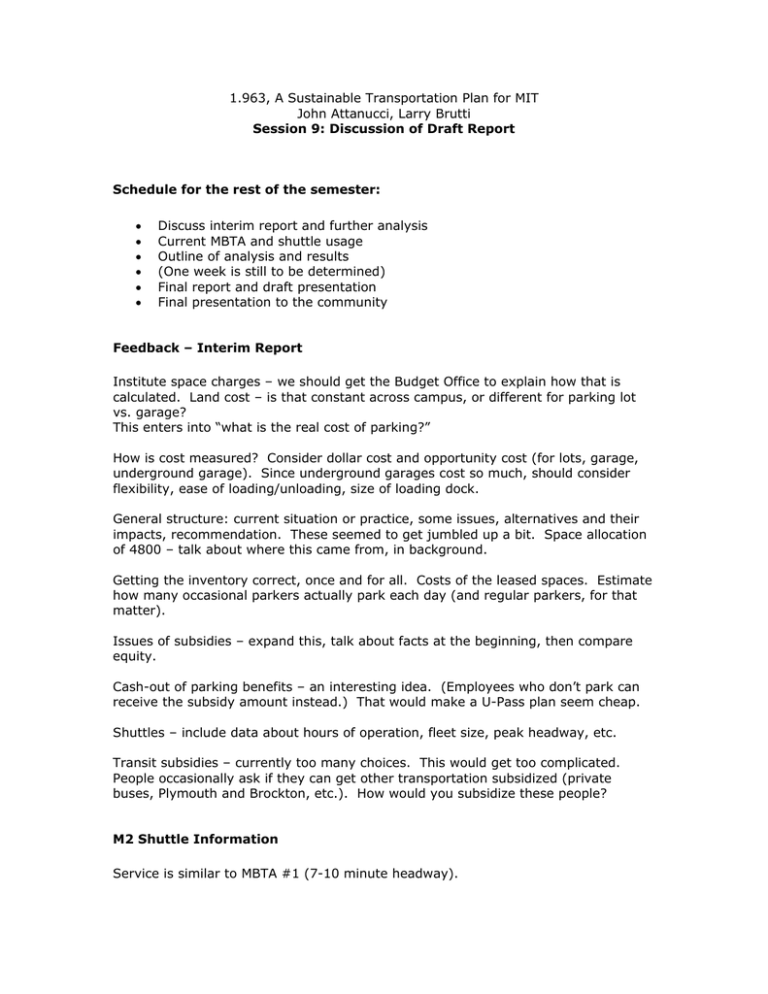
1.963, A Sustainable Transportation Plan for MIT John Attanucci, Larry Brutti Session 9: Discussion of Draft Report Schedule for the rest of the semester: • • • • • • Discuss interim report and further analysis Current MBTA and shuttle usage Outline of analysis and results (One week is still to be determined) Final report and draft presentation Final presentation to the community Feedback – Interim Report Institute space charges – we should get the Budget Office to explain how that is calculated. Land cost – is that constant across campus, or different for parking lot vs. garage? This enters into “what is the real cost of parking?” How is cost measured? Consider dollar cost and opportunity cost (for lots, garage, underground garage). Since underground garages cost so much, should consider flexibility, ease of loading/unloading, size of loading dock. General structure: current situation or practice, some issues, alternatives and their impacts, recommendation. These seemed to get jumbled up a bit. Space allocation of 4800 – talk about where this came from, in background. Getting the inventory correct, once and for all. Costs of the leased spaces. Estimate how many occasional parkers actually park each day (and regular parkers, for that matter). Issues of subsidies – expand this, talk about facts at the beginning, then compare equity. Cash-out of parking benefits – an interesting idea. (Employees who don’t park can receive the subsidy amount instead.) That would make a U-Pass plan seem cheap. Shuttles – include data about hours of operation, fleet size, peak headway, etc. Transit subsidies – currently too many choices. This would get too complicated. People occasionally ask if they can get other transportation subsidized (private buses, Plymouth and Brockton, etc.). How would you subsidize these people? M2 Shuttle Information Service is similar to MBTA #1 (7-10 minute headway). $1.6M / year, 85% paid by Harvard (rest by other Longwood Medical Area institutions) 2700 passengers per day, capacity may be an issue during peak periods Modeling If we knew time for the commuter rail trip (including walking or driving to the station) and mileage of their driving commute, we could figure out costs associated with driving, and additional time for transit commute. This is important to be able to characterize in some way. Also, how to figure out demand for each lot? Need to figure out how many people are (relatively) well-served by subway and commuter rail. What about just raising parking prices and lowering transit prices? That would be easiest to put into effect. 1.963, A Sustainable Transportation Plan for MIT John Attanucci, Larry Brutti Session 9 Page 2 of 2
